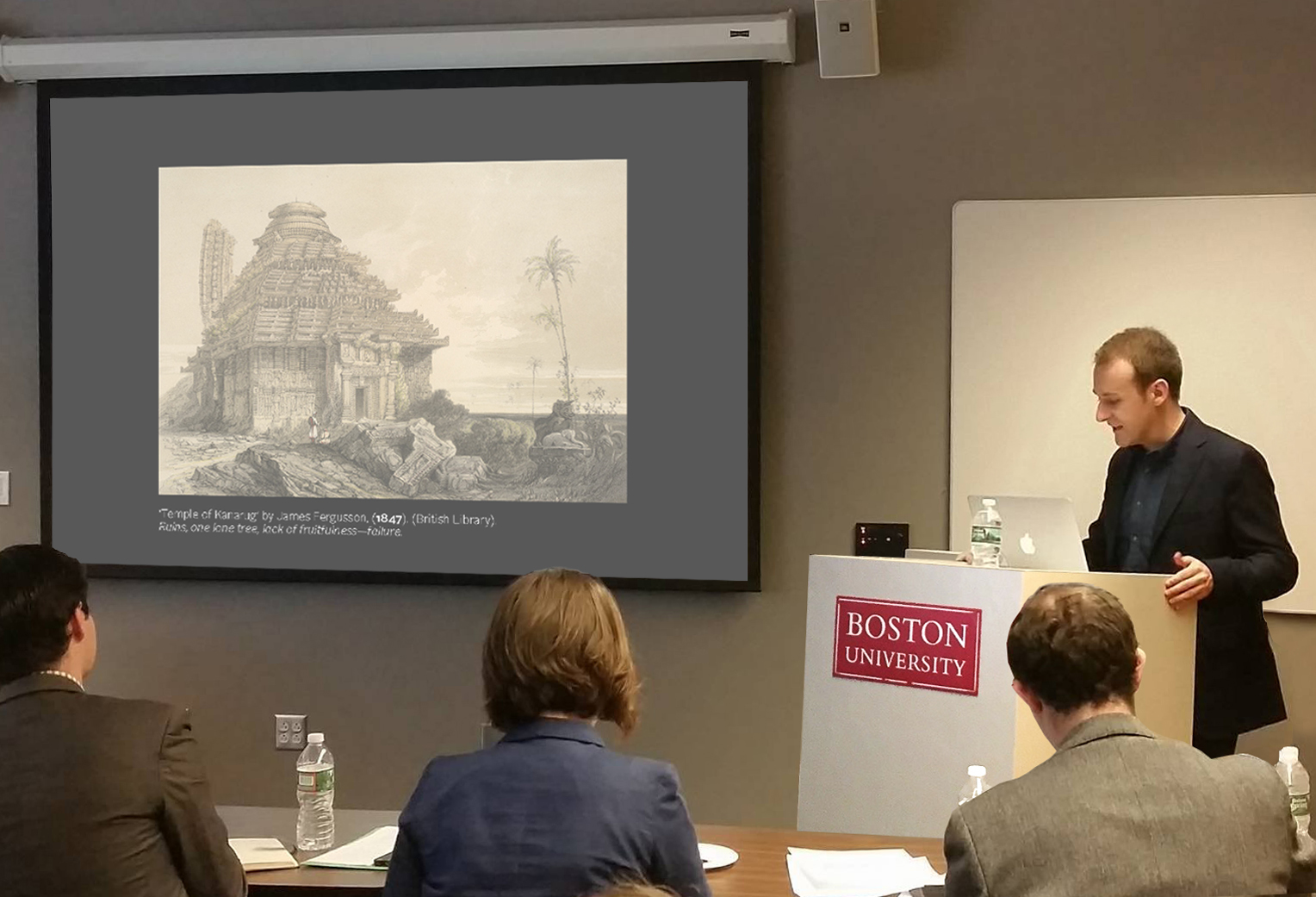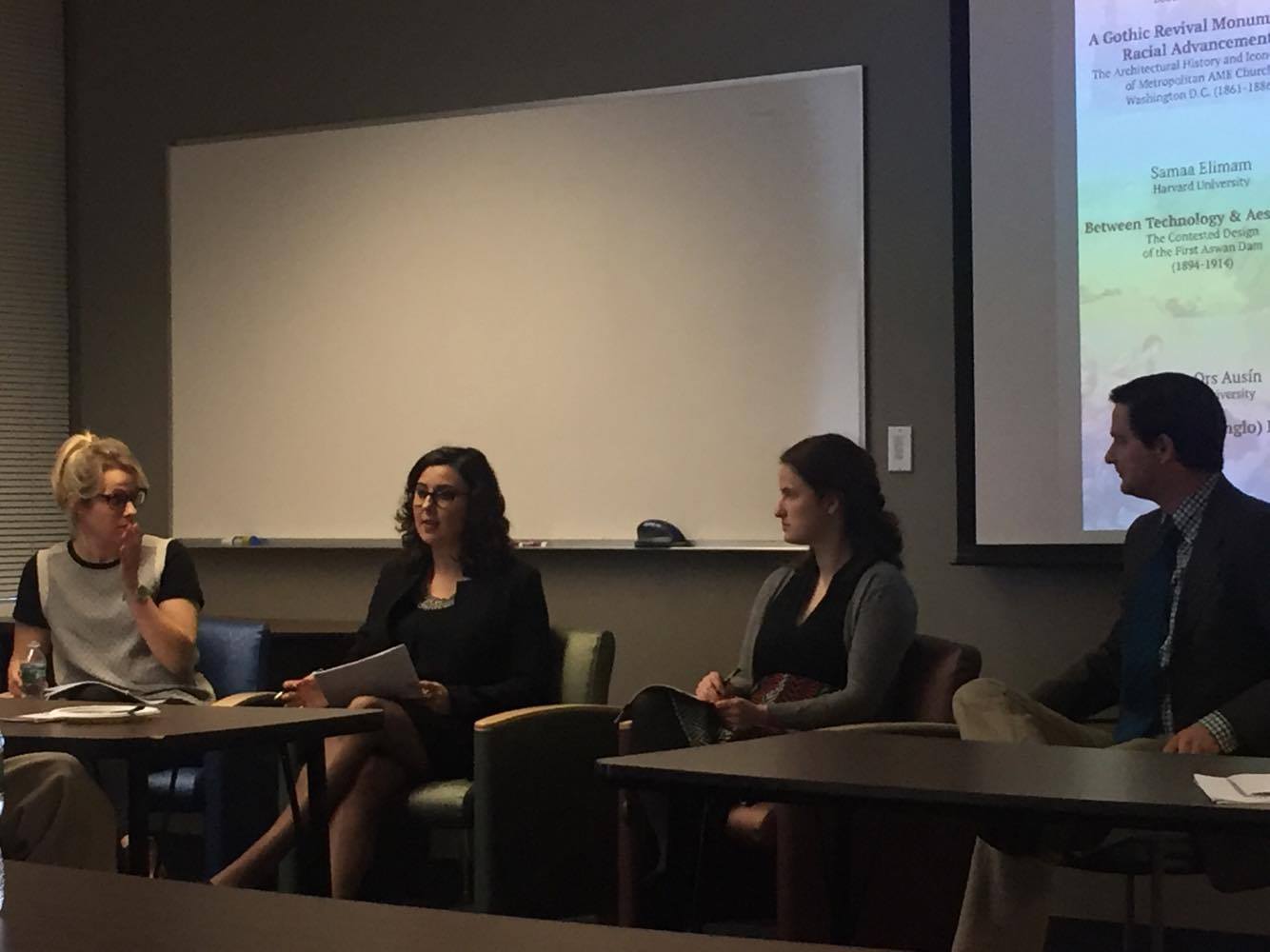Francesca Romana Forlini (MDes CC ’17) and Javier Ors Ausín (MDes CC ’17) presented research at the New England Chapter of the Society of Architectural Historians Student Symposium 2017. Their papers were framed in different Symposium’s panels, Ors Ausín presentation, titled: ‘A Passage to (Anglo) India’, was included in Session 1: Heritage Matters. Forlini’s paper was titled: ‘Towards a French Interior: Dialectics between Tradition and Modernity’, which was part of Session 3: Postwar, Memory, and Aspiration. The NESAH Symposium took place on February 25, 2017, at Boston University.
Both presentations carried forward the research developed by the two Critical Conservation students at the Graduate School of Design, and were part of their final thesis work. Francesca Forlini’s paper looked at the post-World War II housing projects of France, known as the “Grande Ensembles.” These were designed as relatively ubiquitous complexes on the perimeter of Paris, very like the unsentimental modernism of Le Corbusier’s Voisin Plan for Paris. But because of their location, they have become home to those excluded by income or social background from the grand living of central Paris. Forlini’s paper, “Towards a French Interior” studied the individual French resistance to cultural change at the interior domestic scale that counters the expression of modernity in the planning and character of the mid-century buildings.
Ors Ausín’s talk focused on the extravaganza of the British colonial power in India, and the many architectural monuments left behind as a legacy of their supremacy. The fabrication of architectural memorials by various British agencies created colonial landmarks that mixed “nativized” adaptations of Indian design with the forms and expressions of British “home” culture. These hybrid Mughal/Victorian monuments of the Colonial Empire create today a tortured and distorted idea of Indian “heritage” that is familiar to the Mumbai inhabitants as the landscape of “home” and at the same time symbolic of the subjugation and erasure of their indigenous history. It is now the task of the local formerly subjugated Indian populace to preserve these markers of colonial status, as they somehow have become the guardians of the Empire’s legacy. Ors-Ausin’s paper analyzed how India today, with its many economic and environmental problems, takes care of its “heritage”, and how Indian architects and heritage policymakers preserve colonial monuments.






